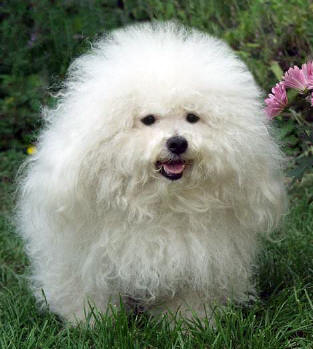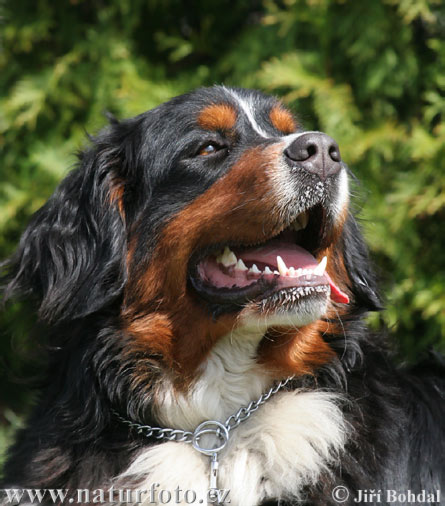For those of us who experience the cold winters every year, we know how our skin can get dry and itchy. Your dog's skin struggles with cold weather, overheated houses, and low humidity, too. Here's how to help keep your pooch itch-free:
*Brush your dog often. Even shorthaired dogs need help sloughing off dead skin cells. Brushing stimulates circulation and kicks up production of natural moisturizers from oil glands.
*Shampoo less often. Experts warn that weekly baths remove much-needed lubricating oils.
* Use a pet shampoo. Keep your own shampoo, even the gentle one, on the shelf, and use a moisturizing doggie-formulated one.
*If dry skin persists, take dog to the vet. Itching can be a sign of something more serious, such as parasites, hot spots, allergies and more.
|
|
|---|
|
|
|---|
Sunday, November 30, 2008
Ear Health
The most common cause of infection cats and dogs is ear mites, which create a large amount of very dark brown itchy debris. Most ear mite treatments require multiple doses. Veterinarians carry options that are effective in just one – although the ears will need to be cleaned several times. Although cats are the natural host and carriers of ear mites, dogs can be affected too, so all contact pets should be treated.
Dogs, particularly floppy-eared ones, commonly get yeast and bacterial infections in their ears. This is generally an overgrowth of microorganisms that are normally present in low numbers in the ear canal; these are not directly contagious to other animals.
Some other causes of infections in dogs and cats are excess moisture in the ears (swimming, bathing, excessive grooming from another pet), and skin allergies.
Common signs to watch for:
Scratching or rubbing of ears and head
Discharge in the ears
Ear odor
Redness or swelling of the ear canal
Pain and tenderness around the ears
Shaking of the head or tilting the head to one side
Changes in behavior such as irritability and depression
Key points for ear health:
Have your veterinarian show you how to safely clean ears
1 – 2 times per month and after swimming/baths clean your pets’ ears to help prevent infections
Check floppy ears at least once per week for any of the common signs listed above and contact your vet if any of those occur
Only use pet ear cleaners or others as directed by your veterinarian, you may damage the ears with at-home remedies
Check with your veterinarian about medications for ear infections
(Info from the Wellness Food Brand e-newsletter)
Dogs, particularly floppy-eared ones, commonly get yeast and bacterial infections in their ears. This is generally an overgrowth of microorganisms that are normally present in low numbers in the ear canal; these are not directly contagious to other animals.
Some other causes of infections in dogs and cats are excess moisture in the ears (swimming, bathing, excessive grooming from another pet), and skin allergies.
Common signs to watch for:
Scratching or rubbing of ears and head
Discharge in the ears
Ear odor
Redness or swelling of the ear canal
Pain and tenderness around the ears
Shaking of the head or tilting the head to one side
Changes in behavior such as irritability and depression
Key points for ear health:
Have your veterinarian show you how to safely clean ears
1 – 2 times per month and after swimming/baths clean your pets’ ears to help prevent infections
Check floppy ears at least once per week for any of the common signs listed above and contact your vet if any of those occur
Only use pet ear cleaners or others as directed by your veterinarian, you may damage the ears with at-home remedies
Check with your veterinarian about medications for ear infections
(Info from the Wellness Food Brand e-newsletter)
Friday, November 28, 2008
Nova espécie de Platydoras
Uma nova espécie do gênero Platydoras é descrita para as drenagens costeiras do nordeste do Brasil (rios Pindaré a Parnaíba). Descrita pelos ictiólogos Nivaldo Piorski, Julio César Garavello, Mariangeles Arce e Mark Sabaj Pérez, esta foi nomeada de Platydoras brachylecis.
Difere de seus congêneres pela exclusiva combinação dos seguintes caracteres: faixa amarelo-pálida a branco iniciando acima das órbitas, continuando médio-lateralmente sobre o corpo e atingindo os raios medianos da nadadeira caudal; pele das axilas dos espinhos médio-laterais sem concentração de pequenas pintas negras; escudos médio-laterais baixos (altura do décimo escudo 8.8-11.9% do comprimento padrão) e escudos médio-laterais do pedúnculo caudal distintamente separados das placas médio-dorsais e médio-ventrais da mesma região por uma faixa de pele. Também apresenta diferença no formato da bexiga natatória )órgão interno do peixe para controlar a posição dele em uma coluna d'água).
Brachylecis deriva do grego, onde brachy signifca curto e lekis significa placa, no que diz respeito ao tamanho das placas laterais do peixe.

Mais três espécies de Platydoras são reconhecidas como válidas: P. armatulus (distribuída pelas drenagens do baixo Orinoco, Amazônia e Paraguai-Paraná), P. costatus (drenagens costeiras do Suriname e Guiana Francesa) e P. hancockii (drenagens do Negro, Essequibo, Demerara e alto Orinoco). As espécies nominais P. dentatus e P. helicophilus são provisoriamente consideradas sinônimos juniores de P. costatus.
Para mais informações: Piorski, N.M; Garavello, J.C.; Arce, M.; Pérez, M. H.S. Platydoras brachylecis, a new species of thorny catfish (Siluriformes: Doradidae) from northeastern Brazil. Neotropical. ichthyology. 2008, v. 6, n. 3, pp. 481-494.
Adaptado e traduzido por Ricardo Britzke
© Copyright 2008 ©
Para mais informações: Piorski, N.M; Garavello, J.C.; Arce, M.; Pérez, M. H.S. Platydoras brachylecis, a new species of thorny catfish (Siluriformes: Doradidae) from northeastern Brazil. Neotropical. ichthyology. 2008, v. 6, n. 3, pp. 481-494.
Adaptado e traduzido por Ricardo Britzke
© Copyright 2008 ©
Thursday, November 27, 2008
Wednesday, November 26, 2008
Subscribe to:
Comments (Atom)
|
|
|---|



























































